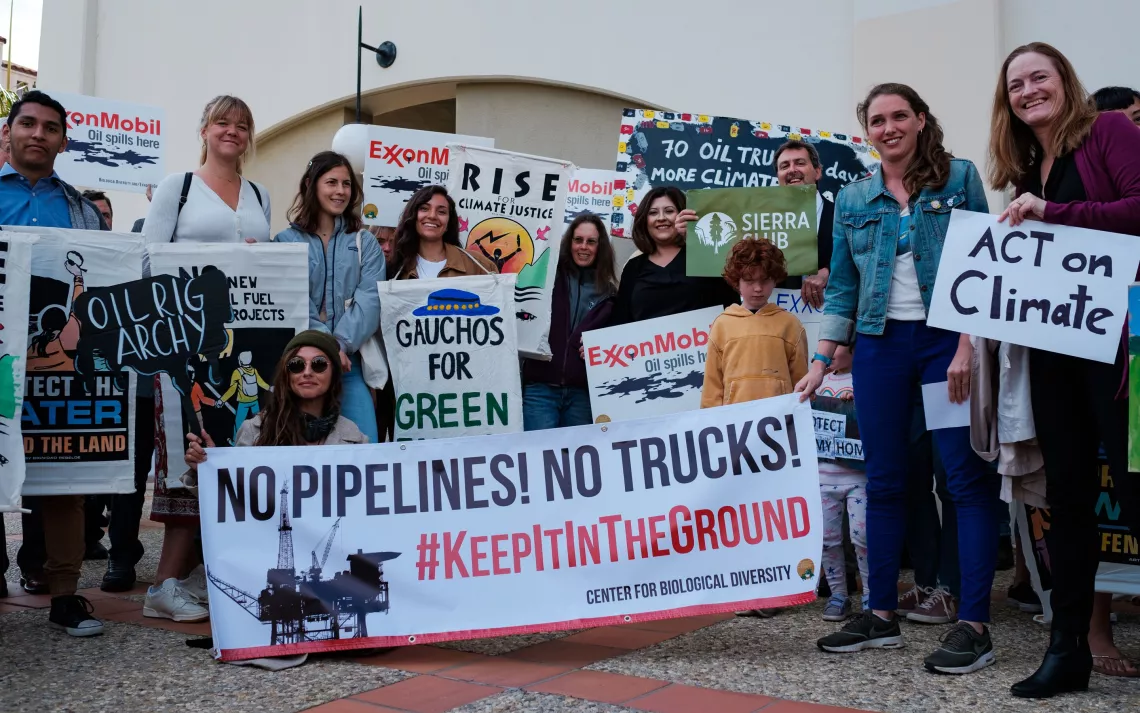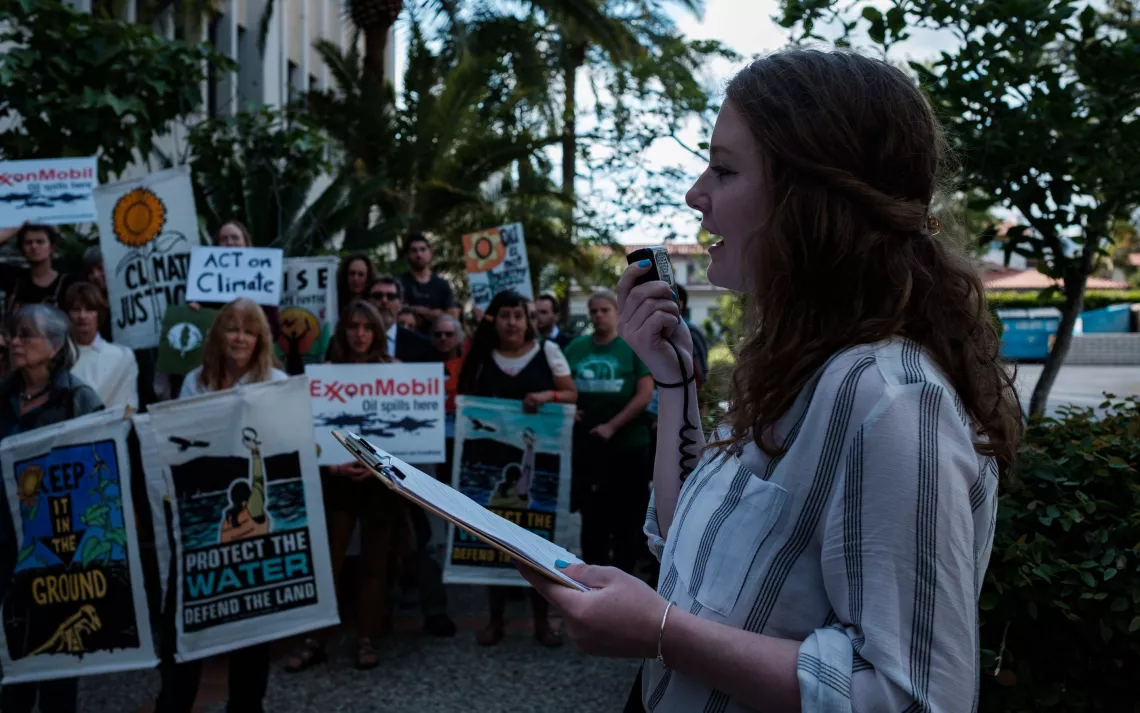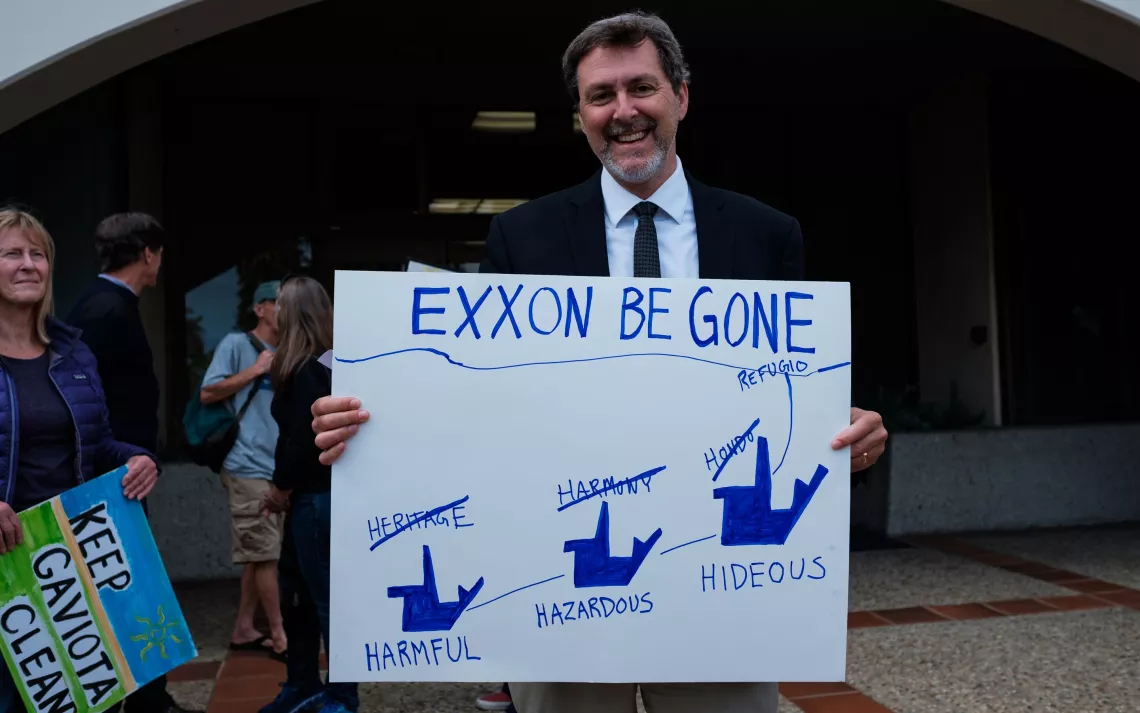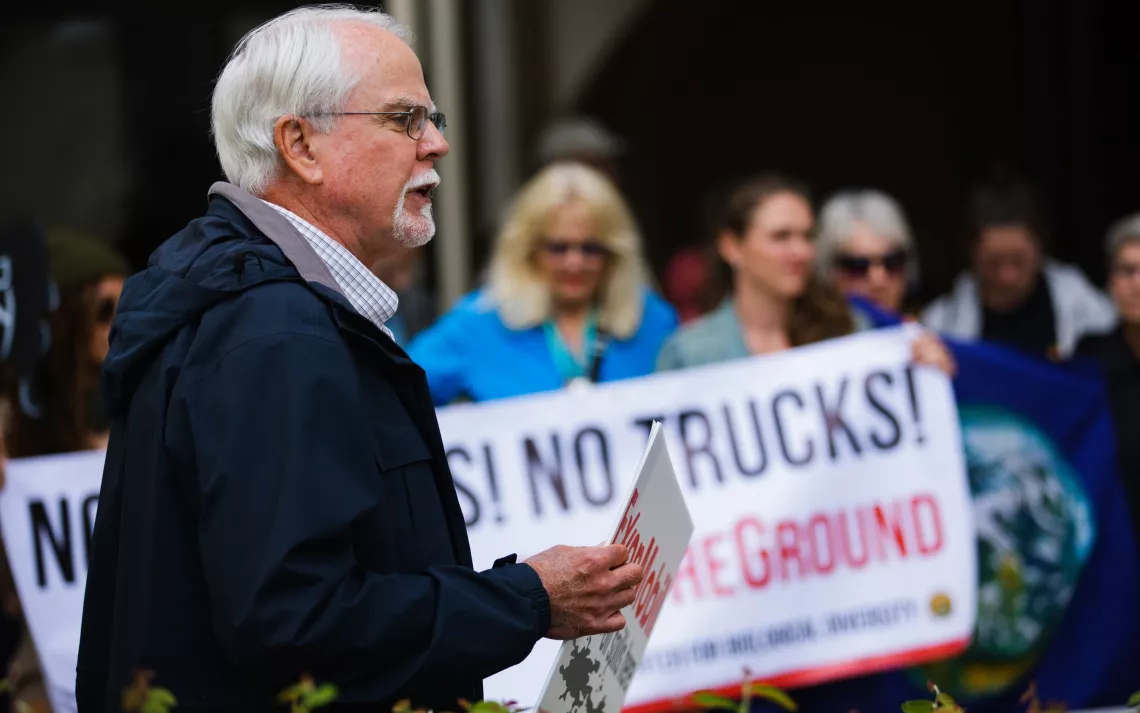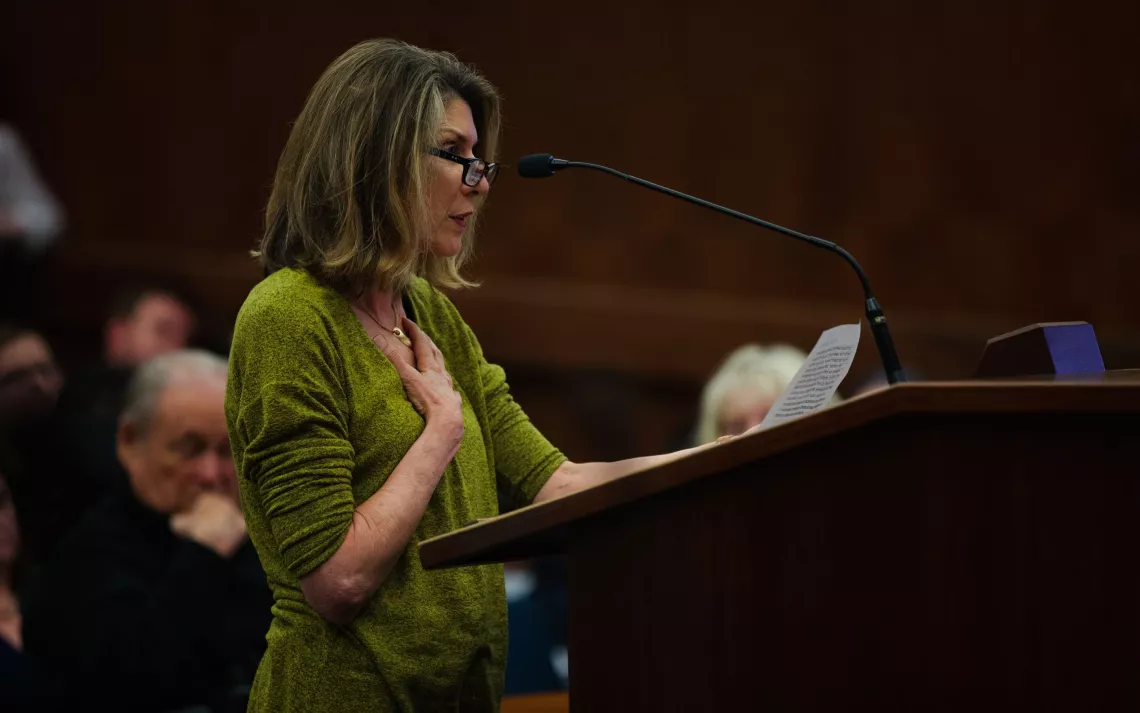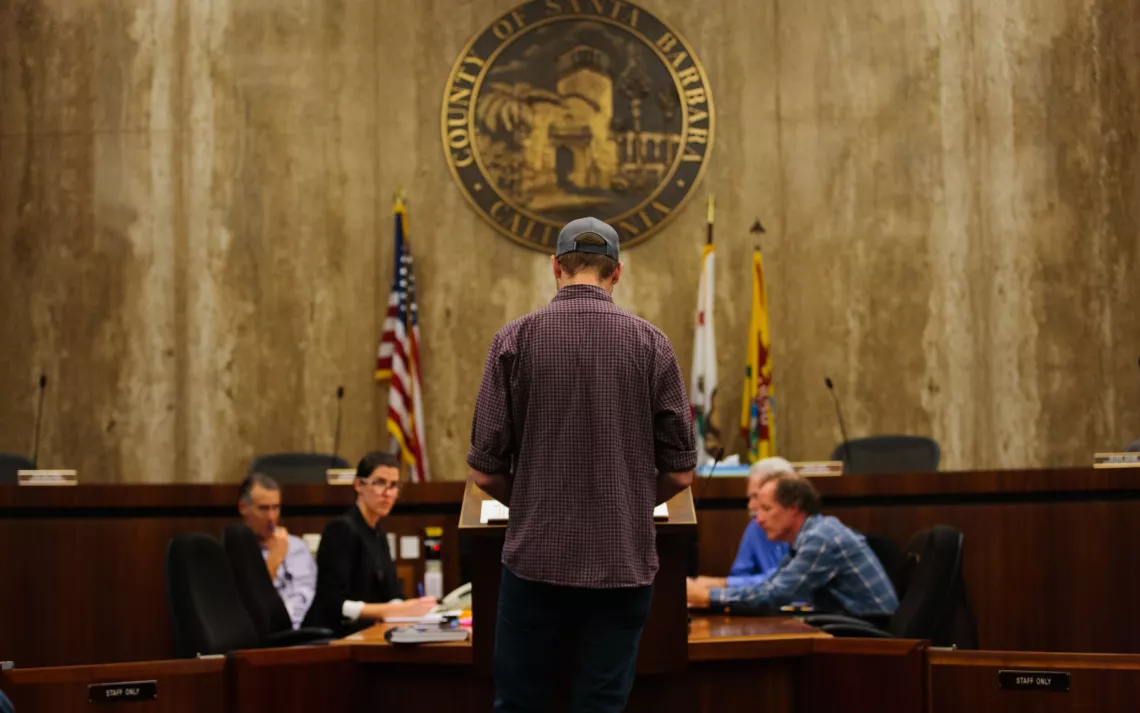Protestors rallied in front of the Santa Barbara County Building on Monday, May 6 against ExxonMobil’s application to truck crude oil 24 hours a day, 7 days a week – up to 70 trucks a day – along dangerous coastal highways through Santa Barbara County. If Exxon gets its way, it would be able to start its three offshore oil platforms in the Santa Barbara Channel, all of which have been shut-down since the disastrous 2015 Plains Pipeline oil spill. We shouldn’t have to choose between coastal oil pipelines and oil tanker trucks; both imperil marine wildlife, coastal communities and climate.
County staff is still taking comments on the draft environmental impact report this month. You can review the draft EIR here and can submit written comments to: klehr@countyofsb.org by Tuesday, May 28, 2019 at 5:00 p.m.
Suggested talking points:
- Even though the project is about restarting Exxon's offshore platforms and onshore facilities, it fails to analyze the impacts of restarting these facilities, such as the risk of offshore oil spills.
- The EIR cites air pollution from 2012-2014, prior to the 2015 spill as the baseline, and leaves out the real current baseline conditions. This radically understates the real increase in emissions and other impacts from the project. The EIR should include current conditions from 2016-2019.
- The EIR should note that many jurisdictions prohibit hazardous chemicals from being transported along waterways, over bridges and tunnels and along critical transportation corridors. The 101 and Gaviota coast fit all of these categories. The project presents unacceptable risks.
- The Transportation and Circulation section of the EIR fails to include the risks of an oil truck accident shutting down the 101 where there is no way around it, even though there are numerous examples of this happening. A tanker truck shut down the 101 in Goleta during the Thomas fire when people were trying to evacuate.
- Staff should recommend denial of the project to the Planning Commission.
Additional talking points provided by Center for Biological Diversity here.
